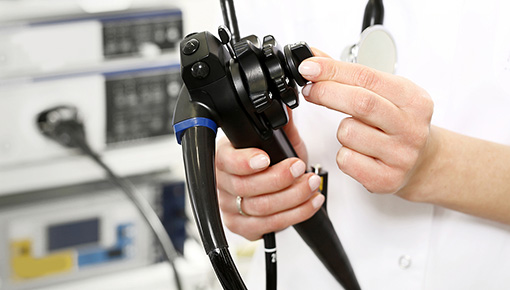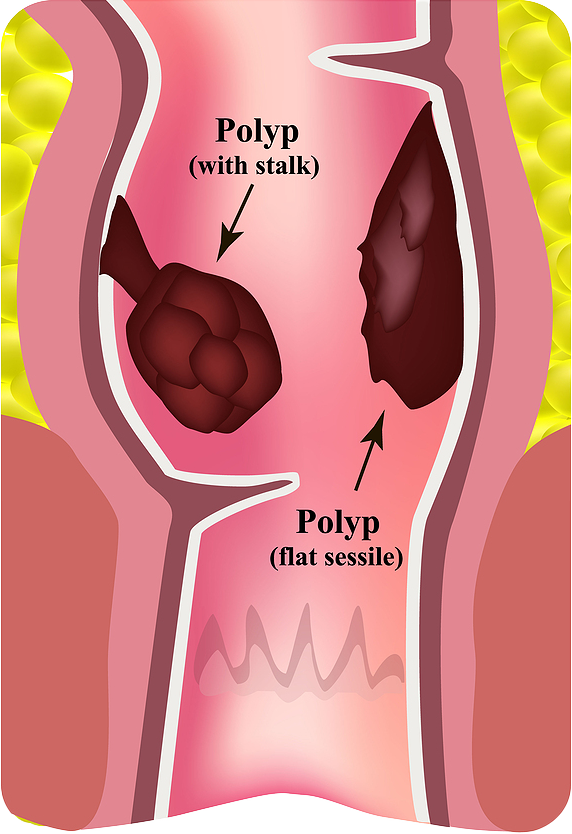Colon Polyps
Colon polyps are incredibly common, but not many people may be aware that they have them. While polyps themselves are typically not problematic, they can sometimes turn into cancerous lesions over time. This is why it is so important to address them early. Understanding more about these polyps can help soothe some of your anxiety if you have recently been diagnosed with them.

Colon Polyps Treatment in Victoria, TX
What Are Colon Polyps?
Colon polyps are growths on the inner walls of the colon, also known as the large intestine. They can range in size from very small to quite large and can be categorized into three types. The most innocuous type of colon polyp is the hyperplastic polyp. However, the majority of colon polyps are known as adenomatous and have the potential to turn into cancerous growths over the years. It is important that these polyps be removed as soon as possible. Finally, malignant polyps are those with cancerous cells in them.

What Are The Common Symptoms?
The majority of colon polyps have no symptoms and are only discovered through routine colon cancer screenings. However, some patients do experience mild to moderate symptoms, particularly if they have large or malignant polyps. The most common associated symptoms include the following:
- Rectal bleeding
- Blood in the stool
- Intestinal pain
- chronic diarrhea or constipation
- Nausea and vomiting
Causes and Risk Factors
Colon polyps form when cells in the colon continue to divide and grow unnecessarily. This often occurs with advancing age, and tends to be more common in the 5th decade of life or later. Additionally, those who have a family history of colon polyps or colon cancer along with those who have a personal history of some type of inflammatory bowel disease are at higher risk of developing polyps.
Certain environmental and lifestyle conditions such as smoking, obesity, a sedentary lifestyle and poorly controlled type 2 diabetes are also associated with increased risk of colon polyp formation and progression.
In rare instances, certain genetic mutations can lead to the development of hereditary colon polyps. This can be the case for those with FAP (familial adenomatous polyposis), HNPCC (Lynch syndrome), Gardner’s syndrome and Peutz-Jeghers syndrome.
Diagnosis of Colon Polyps
The diagnosis of colon polyps may be made after a patient complains of specific symptoms that cannot adequately be traced back to any other medical conditions, but most individuals diagnosed with colon polyps are made aware of the problem during routine screening or diagnostic colonoscopy.
The colonoscopy is the most commonly used test for diagnosis and is considered to be the gold standard in colon cancer screening. During colonoscopy procedure, not only polyps can be detected, but they also can be removed nonsurgically in most cases, thus avoiding their progression to more advanced precancerous or cancerous lesions.
Similar to a colonoscopy, the flexible sigmoidoscopy can also diagnose colon polyps by looking at only the final sector of the colon. In addition, stool-based tests are gaining in popularity as they are more easily completed in the comfort of one’s own home or in a clinic. However, if blood is found in the stool or the stool DNA is positive for polyps, the patient will need a colonoscopy for complete evaluation.
How are Colon Polyps Treated?
As mentioned, the colonoscopy is used not only for diagnosing colon polyps but also for quickly removing them. Polyps can easily be removed during a screening using forceps or a wire loop in a procedure known as a polypectomy. However, if a polyp is too large to be removed using this method, the patient may need minimally invasive surgery using a laparoscope.